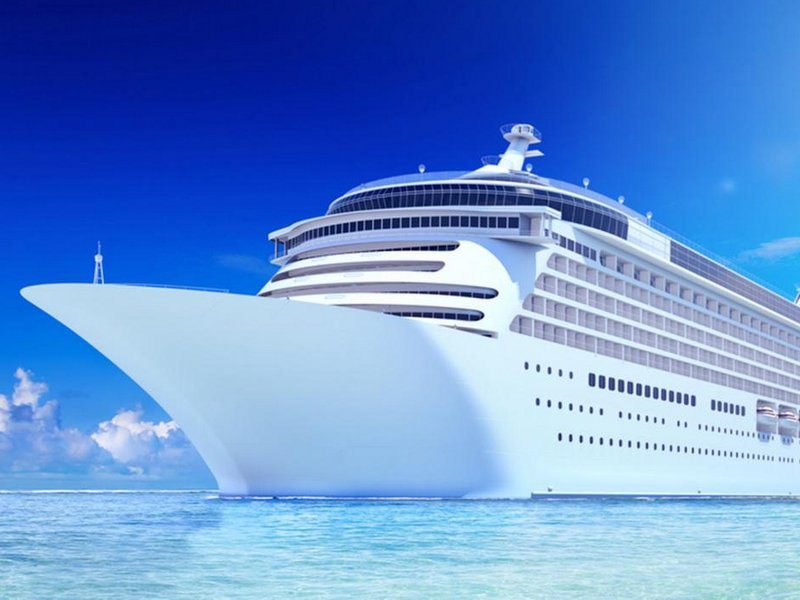The merging of cruising and healthy travel
Our love of cruising and healthy travel has merged. Liz Graham reveals how to disembark healthier than when you boarded
Now, cruisers are seeking something very different – they want to finish their trip healthier than when they started. Passengers can take a boot camp cruise, a spa cruise, a yoga cruise or even a marathon cruise. Gyms have premium positioning at the top of the ship, along with walking tracks, obstacle courses and yoga decks. Day spas still do massages, but you can also get an anti-cellulite algae wrap – or even Botox.
“Wellness cruising”, as it’s known, is a growing tourism sector both here and abroad.
Karen Christensen, Australasia’s general manager for luxury cruise line Silversea Cruises, is just one of many industry experts predicting that wellness cruises will flourish in the next five years.
“The health and wellbeing industry in booming, and now travellers are seeking ways to stay healthy while exploring,” she says.
Why the shift?
The rise of wellness cruising is the natural result of several larger travel trends.
Australians are the most enthusiastic cruisers in the world – for the past 12 years there’s been annual growth of 20 per cent, with more than a million people boarding ships in 2014. If growth continues as predicted, two million Aussies will be cruising in 2020.
“We’ve been the fastest growing market for many years,” Brett Jardine, from Cruise Lines International Association, says. He thinks the quest for relaxation is what drives Australians’ love affair with cruising. “It’s the number-one reason we take a cruise,” he says.
Then there’s the global rise of wellness tourism. Recent figures show that $1 in every $7 spent on tourism goes on wellness pursuits. This category (which includes healthy cruising) was valued at $574 billion in 2013 and is predicted to grow at 10 per cent over the next five years, reaching $880 billion dollars by 2017.
We’re also a nation that’s open to the concept of healthier travel. “Our chefs tell us they make the desserts about 30 per cent less sweet for Aussie cruises than they do for American ones,” Jennifer Vandekreeke, vice president of Carnival Cruise Lines, says.
“And Aussies use the gyms on our ships far more frequently.”
Finally, wellness cruising is competing with land-based health holidays when it comes to quality and cost. At the top end of the scale, a two-week wellness expedition onboard luxury liner Silver Discoverer, which includes activities, meals, one-on-one health counselling and a spa treatment, costs about $13,000, which is comparable to the cost of a high-end land-based health retreat. The big difference is that with this cruise, you’re also sailing through the Asian tropics, with stops at Phuket, South Cinque Island and Galle.
“Travelling at sea encourages a sense of tranquility and intrigue, and when combined with our wellness program, offers guests a voyage of discovery and reflection like no other,” Christensen says.
Meanwhile, fitness fanatics who don’t want to break the bank can take a one-week running-themed Alaska cruise for about $2500, which includes multiple on-land events, training and activities, onboard well-regarded liner Royal Caribbean Radiance of the Seas.
Getting healthy on the high seas
Wellness cruises can be separated into two groups: “themed” cruises, where the primary focus is on wellbeing or a specific fitness activity (such as yoga or cycling), and more traditional cruises where the operators have significantly enhanced the wellness elements.
“Many of the current themed cruises have the vessel chartered by a third party,” Sture Myrmell, senior vice president of P&O Cruises, explains. “They have an existing client base that can fill a whole cruise ship.” That’s why the annual vegan-focused Holistic cruise aboard the MSC Divina, which doesn’t normally cater to this market, quickly sells out.
Some cruise operators, like Silversea, are launching their own programs with individually tailored healthy menus, onboard nutritionists, health seminars as well as yoga and fitness. “The response so far has been overwhelming,” Christensen says.
Other liners have made strategic partnerships. In 2014, Carnival Cruise Lines ran high-profile “bootcamp at sea” cruises with new ambassador Shannan Ponton (a trainer on The Biggest Loser), and it was so successful they’re doing it again. “There are over 500 people on the deck working out with Shannan – it’s an amazing sight,” Vandekreeke says.
Meanwhile, upmarket cruise line Celebrity Cruises has chosen spa treatments as its wellness specialty, launching its “SpaClubs” across the entire fleet last year.
There’s also been across-the-board change to the activities all large ships offer. Over the past few years, Myrmell says the P&O fleet has seen the introduction of boot camps and group training, health and wellbeing seminars on everything from foot pain to weight loss, the installation of its “adventure park” P&O Edge, which features rope and obstacle courses, and medi-spa treatments such as microdermabrasion and acupuncture. “The standard massage is pretty much obsolete,” he adds.
All this means it’s now possible to have a wellness cruise alongside people who just want to lie on a deck chair.
“You can still do nothing, but there’s now lots of new things to try,” Jardine says. “Relaxation means different things to different people, and cruises are catering to that variety.”

What’s your idea of a wellness cruise?
From luxe retreats to DIY breaks, there’s something to suit all tastes
Fitness focus: These cruises are marketed to a specific fitness community, like yogis, runners or cyclists, and might be centred around a specific event (such as an on-land marathon) or offer a daily activity program. An onboard team of experts run regular seminars.
Try: Silversea (for yoga); Marathon Expeditions (for runners).
Spa Indulgence: You’ll know if your cruise is serious about its pampering if the physical spa area takes up premium real estate and offers a spa accommodation package. Look for one with steam and sauna options. Read up on the treatments offered and the credentials of the therapists.
Try: MSC Divina, Queen Mary 2.
Choose your own adventure: Budget-conscious or freedom-loving wellness seekers will love this option. Larger ships offer a variety for fitness activities, like obstacle courses or boot camps. Look for a dedicated team of trainers and healthy eating options.
Try: P&O Pacific Jewel, Carnival Spirit.
One-on-one attention: This is perfect for people who want the floating health-retreat experience, from tailored menus and nutrition consults to personal training sessions. Look for one that’s known for its top quality food or spas, depending on your personal preference.
Try: Silversea, Costa Cruises.
Acknowledgements – Body+Soul, July 12, 2015

